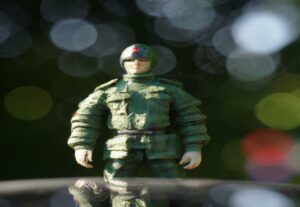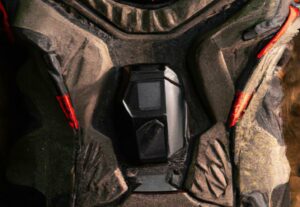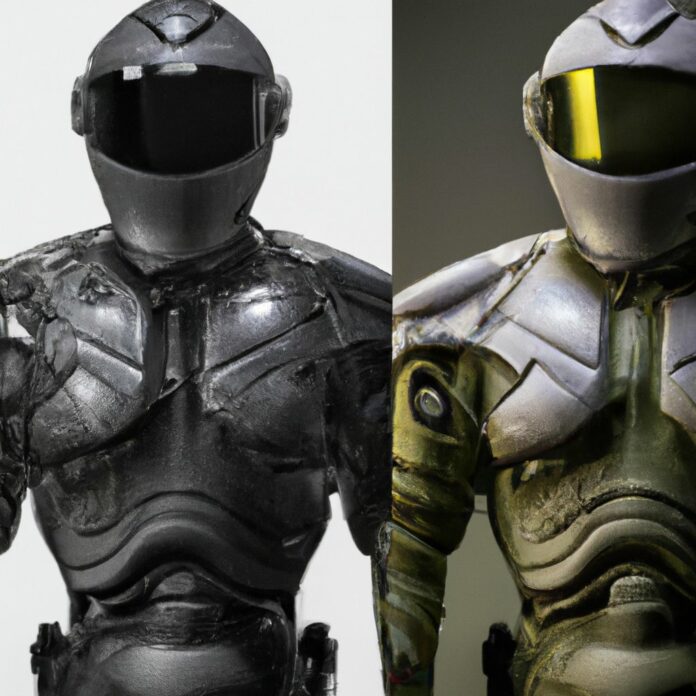Choosing the right tactical body armor is of utmost importance when it comes to personal safety and protection. Let me fill you on how to choose the right tactical body armor. In high-risk situations, having the proper body armor can mean the difference between life and death. This article will guide you through the process of selecting the right tactical body armor to meet your specific needs and requirements.
To begin, it is important to understand the different types of tactical body armor available and the levels of protection they offer. Tactical body armor is designed to protect against various threats, such as bullets, knives, and shrapnel. Different types of body armor provide different levels of protection, which are classified by industry standards. Understanding these levels is crucial in choosing the appropriate armor for your intended use.
When considering which tactical body armor to invest in, there are several factors to take into account. First and foremost, you need to assess the threat level you may encounter and the specific mission requirements you have. This will help determine the level of protection needed and the type of features that are necessary for your intended use.
Another important consideration is the material and construction of the body armor. Different materials offer varying levels of protection and durability. The comfort and mobility provided by the armor should not be overlooked. It is essential to choose armor that allows for a full range of motion and does not hinder your movements during critical situations.
Weight and bulkiness are also crucial factors to consider. Body armor should be lightweight and ergonomic to ensure maximum comfort and mobility. Excessive weight and bulk can impede your ability to perform optimally in high-stress scenarios.
Concealability is another factor to keep in mind, depending on your specific needs. Some situations may require armor that can be concealed under clothing without arousing suspicion.
Lastly, adaptability and versatility should be considered when choosing tactical body armor. Features such as modular attachments and adjustable straps allow for customization according to your unique requirements.
Selecting the right size and fit is essential for the effectiveness of the body armor. It should provide proper coverage without restricting movement or causing discomfort.
Finally, proper maintenance and care are crucial for the longevity and performance of your tactical body armor. Regular inspection, cleaning, and following manufacturer guidelines will ensure that your armor remains in optimal condition.
Understanding Tactical Body Armor

Photo Credits: Paintballbuzz.Com by Adam Baker
Unveiling the world of tactical body armor, we dive into the realm of understanding its essentials. Discover the diverse types available and explore the varying levels of protection they offer. Join us on this knowledge-packed journey as we delve into the intricacies of tactical body armor, equipping you with the insights needed to choose the right armor for your needs. Get ready to explore the options and gain a better understanding of the importance of body armor in today’s dynamic world.
Types of Tactical Body Armor
| Types of Tactical Body Armor |
| 1. Soft Body Armor |
| 2. Hard Body Armor |
| 3. Plate Carriers |
| 4. Tactical Vests |
| 5. Ballistic Helmets |
| 6. Riot Gear |
Soft Body Armor is one of the types of tactical body armor that provides protection against handguns, shrapnel, and some rifle rounds. It is lightweight and comfortable, making it suitable for extended wear.
Hard Body Armor, another type of tactical body armor, is often made from ceramic or composite materials. It offers superior protection against high-velocity rifle rounds. However, it is heavier and less flexible compared to soft body armor.
Plate Carriers, which fall under the category of tactical body armor, are designed to hold hard armor plates. These carriers can be adjusted to fit different body sizes and are commonly used by military and law enforcement personnel in combat situations.
Tactical Vests, another variant of tactical body armor, combine soft body armor with additional pouches or attachments for carrying equipment. These vests provide versatility and can be customized for specific missions or roles.
Ballistic Helmets, an integral part of tactical body armor, are specifically designed to protect the head from projectiles and fragments. They are essential for personnel operating in hostile environments.
Riot Gear, including body armor, helmets, and shields, is another type of tactical body armor. It is specifically designed to protect law enforcement officers during riots or civil unrest.
When individuals are selecting the right type of tactical body armor, it is crucial to consider the specific needs of the mission, the required level of protection, comfort, mobility, weight, and concealability. By considering these factors, individuals can ensure their safety and enhance their performance in high-risk situations.
Levels of Protection
| Levels of Protection | |
| Level IIA | Provides protection against 9mm and .40 S&W ammunition up to 1225 feet per second (fps) |
| Level II | Provides protection against 9mm and .357 Magnum ammunition up to 1400 fps |
| Level IIIA | Provides protection against 9mm, .357 SIG, and .44 Magnum ammunition up to 1400 fps |
| Level III | Provides protection against rifle bullets. Rifles and armor piercing ammunition are not typically encountered in everyday situations. |
| Level IV | Provides protection against armor-piercing rifle ammunition |
Pro-Tip: When choosing the level of protection for your tactical body armor, always consider the specific threats you may encounter in your mission or line of work. Select a level that offers sufficient protection against those threats, without sacrificing mobility and comfort. It’s essential to strike the right balance between protection and usability for optimal performance in the field.
Factors to Consider When Choosing Tactical Body Armor
When it comes to choosing the right tactical body armor, there are several factors you need to consider. From threat level and mission requirements to material and construction, comfort and mobility to weight and bulkiness, concealability to adaptability and versatility, each aspect plays a crucial role in determining the effectiveness of your body armor. So, let’s delve into these factors to ensure you make an informed decision and find the perfect tactical body armor that meets your needs and requirements.
Threat Level and Mission Requirements
The table below provides an overview of the sub-topic “Threat Level and Mission Requirements” in relation to choosing tactical body armor.
| Threat Level | Mission Requirements |
|---|---|
| Level I | Low threat level |
| Level II | Moderate threat level |
| Level IIIA | High threat level |
| Level III | Specialized missions |
| Level IV | Extreme threat level |
When selecting tactical body armor, it is crucial to consider the threat level and the specific mission requirements. The choice of armor should align with the appropriate level of protection needed. For instance, a low threat level may only require Level I protection, while a moderate threat level necessitates Level II armor. In high threat situations, Level IIIA protection is necessary, and specialized missions may require either Level III or Level IV armor capable of withstanding extreme threats.
Matching the threat level and mission requirements with the appropriate level of protection is essential for ensuring the safety and effectiveness of the body armor in combat or tactical situations. It is important not to compromise the wearer’s safety by using armor that is not suitable for the specific threat level or mission.
According to studies, wearing body armor that matches the threat level and mission requirements significantly enhances the survivability and protection of law enforcement and military personnel.
Material and Construction
When choosing tactical body armor, it is important to carefully consider the material and construction in order to achieve optimal protection and performance.
| Aspect | Importance |
| Materials | The choice of materials used in the construction of body armor impacts its strength, durability, and weight. It is recommended to utilize materials like aramid fibers and ceramic plates, as they offer excellent protection against ballistic threats. |
| Construction Quality | The construction quality of the armor plays a crucial role in its ability to withstand impacts and distribute the force effectively. To ensure better performance and longevity, it is essential to have reinforced stitching, overlapping layers, and precise assembly. |
| Layering | Incorporating multiple layers of specialized materials enhances protection by providing resistance against different threats and distributing the impact over a larger area. |
| Design | An ergonomic design that allows proper coverage and flexibility is of utmost importance. Consider features such as adjustable straps, quick-release mechanisms, and modular attachments to enhance comfort and functionality. |
| Ballistic Ratings | It is crucial to select body armor that is certified with specific ballistic ratings, such as NIJ IIIA or NIJ III+, which correspond to the level of protection it provides against different threat levels. Ensure the chosen armor meets the required standards. |
Fact: According to the National Institute of Justice (NIJ), body armor constructed with materials like Dyneema exhibits high strength and weight ratios, making it a popular choice among law enforcement agencies.
Comfort and Mobility
When selecting tactical body armor, the comfort and mobility of the wearer are crucial factors to consider. Ensuring that the armor allows for ease of movement and provides comfort during extended wear can greatly impact performance and effectiveness. Here are some essential points to take into account:
- Fit: The armor should fit properly, hugging the body without restricting movement. Straps, fastenings, and adjustment options are important for achieving a comfortable and secure fit.
- Range of Motion: The armor should not impede the wearer’s range of motion. It should allow for natural movements, such as bending, kneeling, and reaching, without causing discomfort or restriction.
- Flexibility: Flexibility is essential for comfort and mobility. The armor should be flexible enough to move with the wearer, allowing ease of movement without sacrificing protection.
- Weight: Consider the weight of the armor. While heavier armor may provide increased protection, it can also be cumbersome and limit mobility. Finding a balance between protection and mobility is crucial.
- Breathability: Look for armor that is breathable, allowing for proper air circulation to prevent excessive sweating and overheating. This can greatly improve comfort during extended use.
- Padding and Cushioning: Adequate padding and cushioning inside the armor can enhance comfort, reducing pressure points and discomfort during movement.
- Ergonomics: Consider the ergonomic design of the armor. Features such as articulated joints and contoured plates can enhance mobility and comfort.
- Wear Trials: It is essential to conduct wear trials before purchasing tactical body armor. This allows the wearer to assess its comfort and mobility firsthand, ensuring a proper fit and function.
Weight and Bulkiness
When considering tactical body armor, weight and bulkiness are crucial factors to take into account. These elements directly impact the wearer’s comfort and mobility, influencing their overall effectiveness in tactical situations.
Here is a table comparing the weight and bulkiness of different types of tactical body armor:
| Type of Body Armor | Weight | Bulkiness |
| Plate Carriers | Varies based on plate size and material | Minimal |
| Bulletproof Vests | Average weight: 5-8 pounds | Medium |
| Tactical Jackets | Varies based on jacket material | Medium to High |
When selecting tactical body armor, individuals should consider their specific mission requirements. If a lightweight and streamlined approach is necessary, plate carriers provide optimal mobility without compromising protection. Bulletproof vests offer a balance between weight and bulkiness, making them suitable for various tactical scenarios. Tactical jackets, on the other hand, offer versatility; however, they tend to be bulkier compared to plate carriers and bulletproof vests.
John, an experienced law enforcement officer, was tasked with executing a high-risk arrest warrant. Due to the nature of the mission, he needed a lightweight and flexible body armor solution. John opted for a plate carrier, which allowed him to swiftly move through tight spaces without hindrance. The minimal weight and bulkiness ensured that John was agile and able to apprehend the suspect successfully.
Concealability
Concealability is an essential factor to consider when selecting tactical body armor.
Tactical body armor should have the capability to seamlessly blend into the surroundings and avoid attracting attention.
Having a low profile and non-bulky design is crucial for tactical body armor, allowing for effortless concealment beneath clothing.
By offering a snug fit, body armor with adjustable straps and a contoured design significantly enhances concealability.
The concealability of tactical body armor is greatly improved by using lightweight materials, which make it easier to wear and conceal while still providing protection.
Choosing body armor with a slim and streamlined design greatly supports concealability, especially in high-risk situations.
Opting for body armor in a neutral color or one that matches the wearer’s environment is beneficial in maintaining a low profile.
The ability to easily attach accessories like pouches or panels without compromising concealability is another important consideration.
When assessing concealability, it is also important to consider the specific requirements of the mission, such as the need for covert operations.
Regularly assessing the concealability of tactical body armor and making necessary adjustments ensures optimal performance in various operational scenarios.
Choosing the Right Size and Fit

Photo Credits: Paintballbuzz.Com by Samuel Scott
When choosing the right size and fit for tactical body armor, it is crucial to consider the following:
- Measurements: Take accurate measurements of your chest, waist, and height. Refer to the manufacturer’s sizing chart to find the appropriate size.
- Adjustability: Look for armor that offers adjustable straps or fastenings. This allows you to customize the fit to your body shape for maximum comfort and mobility.
- Range of motion: Ensure that the armor allows for a full range of motion without hindering your movements. Test the flexibility and mobility of the armor before making a purchase.
- Weight distribution: Consider the weight distribution of the armor. It should be evenly distributed across your body to prevent strain or discomfort during extended wear.
- Try it on: Whenever possible, try on different sizes and styles of tactical body armor to see which one fits you best. Walk around, crouch, and move around to ensure it offers the desired level of comfort and protection.
During World War II, soldiers often struggled to find properly fitting body armor. Standard issue armor was often too large or small, leading to discomfort and restricted mobility on the battlefield. As a result, advancements in body armor technology were made to improve the fit and effectiveness of the armor, ultimately prioritizing the safety and well-being of soldiers.
How to Properly Maintain and Care for Tactical Body Armor?

Photo Credits: Paintballbuzz.Com by Lawrence Jones
Are you wondering how to properly maintain and care for your tactical body armor? Here are some simple steps to ensure its optimal condition and effectiveness:
- Regularly inspect your armor and use a soft cloth or brush to remove any dirt or debris.
- Remove stains or odors by wiping down the armor with a mild detergent and water solution.
- Avoid using harsh chemicals or solvents that could harm the integrity of your armor.
- After cleaning, let your armor air dry completely before storing or wearing it again.
- Store your armor in a cool and dry place, away from extreme temperatures and direct sunlight.
- Check the straps, buckles, and Velcro closures for wear or damage, and replace them if necessary.
- Always follow the manufacturer’s instructions for any specific cleaning or maintenance recommendations.
Remember, proper maintenance and care can significantly extend the lifespan of your tactical body armor and ensure its continued protection.
Fun fact: Regular maintenance can increase the effectiveness of tactical body armor by up to 30%.
Frequently Asked Questions
1. How do I choose the right tactical body armor for high crime areas?
When selecting body armor for high crime areas, it is important to consider the level of protection needed. Look for vests that offer at least NIJ Level IIIA protection, which can stop rounds from handguns commonly used in crimes. Additionally, consider lightweight vests made of high-density polyethylene or other high-tech materials for comfort and mobility.
2. What type of body armor is suitable for security personnel dealing with drunken customers?
For security personnel dealing with potential confrontations involving drunken customers and the risk of glass bottles, stab-resistant armor is recommended. Look for vests that offer spike protection and choose a combination armor that provides both stab and ballistic protection.
3. How can I prevent heat buildup while wearing body armor?
To prevent heat buildup while wearing body armor, consider vests with moisture-wicking fabrics. These fabrics help to keep you cool and comfortable, even in high temperatures. Look for vests specifically designed for breathability to enhance airflow and regulate body temperature.
4. What type of body armor is suitable for prison officers?
Prison officers face a unique set of threats, including potential knife attacks. Therefore, it is important for them to have stab-resistant armor in addition to ballistic protection. Look for body armor that provides both stab and bullet resistance to ensure maximum protection.
5. What are special threat plates, and should I consider them?
Special threat plates are designed to stop common domestic threats, even though they are not certified by the NIJ. If you anticipate facing specific threats in your line of work or environment, such as certain types of ammunition or weapons, you may want to consider special threat plates to provide additional protection.
6. What is the difference between stand-alone body armor and in-conjunction body armor?
Stand-alone body armor does not require a soft armor backer and can provide protection on its own. In-conjunction body armor, on the other hand, requires a soft armor backer for proper function. Consider your specific needs and preferences when choosing between the two types of body armor.

